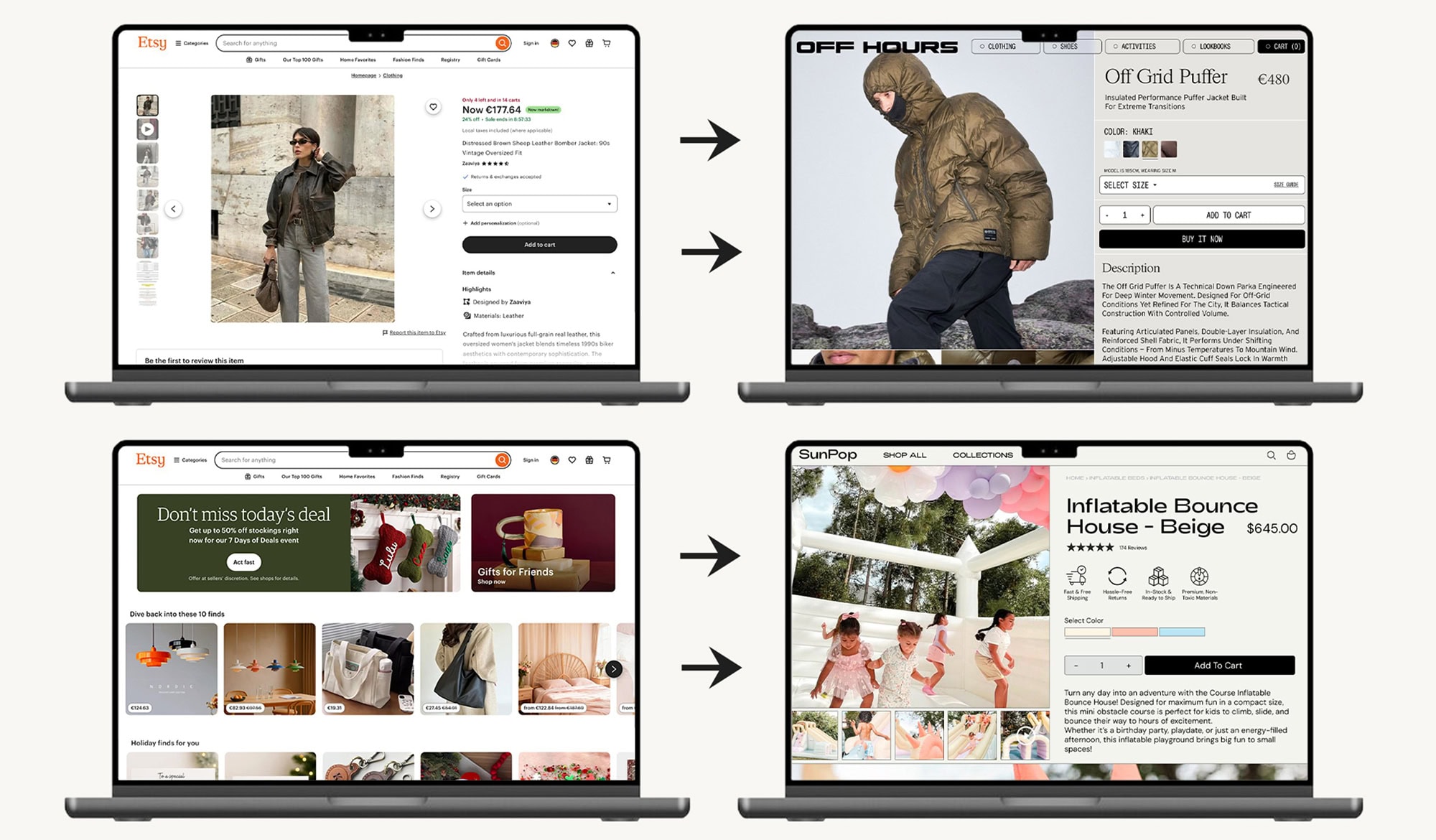Which E-Commerce Platform Is Best for New Sellers in 2025?
If you’ve been wondering whether e-commerce is still worth it in 2025, you’re not alone. The short answer? Yes — but it’s not about chasing trends anymore. It’s about trust, design, and the platform you build on. Here’s some honest advice from a Shopify designer who’s seen what works (and what really doesn’t).
Real Advice from a Shopify Designer
1. A Reality Check for 2025
Almost every week, someone asks:
“Is it still worth starting an online store in 2025? And if so, which platform should I use?”
Let’s be honest — the “easy money” days of dropshipping are over.
The new e-commerce game is about branding, localization, and trust.
As a Shopify designer who has seen hundreds of stores, I can tell you this:
Most stores don’t fail because of their products — they fail because of how they’re built.
Before choosing a platform, think about what kind of business you actually want to build.
2. What E-Commerce Really Looks Like in 2025
Today, success isn’t about copying trending products or listing endless SKUs.
It’s about differentiation — why should a customer trust you instead of someone else?
Shoppers research, compare, and read reviews before buying.
The future belongs to brands that invest in presentation, experience, and long-term relationships.
3. The Three Main Types of Platforms
Each platform type serves a different goal — here’s how to think about them:
1. Marketplaces (Amazon, Etsy, eBay)
Easy to start, with built-in traffic. But you’re essentially renting space on someone else’s platform.
You can sell, but it’s difficult to build a real brand.
2. Social Commerce (TikTok Shop, Instagram)
Great if you’re skilled at content creation — but highly dependent on algorithms.
Traffic can be unstable, and trends shift quickly.
3. Independent Stores (Shopify, WooCommerce)
You get full control over your brand, customer data, and experience.
But with freedom comes responsibility — traffic, conversion, and trust are all on you.
For anyone who wants to build a long-term brand, an independent store is the best investment you can make.
4. Shopify vs. WooCommerce — A Professional Perspective
Shopify
Pros:
- All-in-one infrastructure: hosting, CDN, SSL, and security are built in.
- Seamless checkout and global payment options.
- Scales easily as your brand grows.
- Large app ecosystem for optimization and marketing.
Challenges:
- Success isn’t “drag-and-drop.” Many stores look identical and don’t convert.
- Design, UX, and storytelling matter more than the platform itself.
- Advanced localization and customization often require professional help.
Bottom line:
Shopify gives you professional tools — but tools don’t build trust.
Strategy and design do.
WooCommerce
Pros:
- Free and open-source, with full flexibility.
- Excellent for SEO and blogging through WordPress integration.
- Great for technically skilled teams or content-heavy brands.
Challenges:
- Requires technical setup, maintenance, and security updates.
- Performance depends on your hosting and configuration.
- Can become time-consuming without a developer.
Bottom line:
WooCommerce is ideal if you’re technical or have developer support.
Otherwise, it can quickly become a distraction from growing your business.
5. Choosing the Right Platform for Your Business Stage
Here’s a simple way to think about it:
If you want reliability and control, go with Shopify.
It’s fast, stable, and scalable — ideal for businesses that want to build a real brand.
If you’re testing ideas on a tight budget and you’re comfortable with tech, WooCommerce can work well.
If you want immediate traffic and lower entry barriers, start with Amazon or Etsy.
If you’re great at content and audience engagement, focus on TikTok Shop or Instagram Shopping.
Insight:
A well-built Shopify store can convert 2–3x higher than a basic one.
The difference isn’t the tool — it’s the strategy behind the design.
6. What Beginners Often Get Wrong
“Shopify is expensive.”
Poor design that doesn’t convert is far more expensive.
“Just upload products and run ads.”
You need brand logic, trust flow, and localization — not just traffic.
“E-commerce = fast money.”
It’s not. It’s steady growth built on reputation.
“I can do everything myself.”
You can — but if your store looks like a template, customers won’t trust you with their credit card.
7. How to Start the Right Way
- Define your niche clearly.
Not “I sell products,” but “I help X audience solve Y problem.” - Invest in your brand story.
Build visual consistency through name, logo, colors, and photography. - Design your site professionally.
UX, layout, and storytelling make or break conversion. - Localize your content.
Don’t just translate — adapt your tone, images, and trust elements. - Build trust layers.
Reviews, shipping info, contact details, and social proof all matter. - Drive traffic strategically.
Combine SEO, influencer marketing, and paid ads — not just one. - Iterate constantly.
Track conversion, fix bounce rates, and refine your design regularly.
8. The Real Key: Trust > Traffic
Traffic is easy. Trust is rare.
A great Shopify store feels real — long before the first product is added to the cart.
Design communicates reliability before a word is read.
Professional UX = Invisible Confidence = Higher Conversion.
A great store doesn’t just look “designed” — it looks trustworthy.
9. Final Thoughts
E-commerce isn’t dying — it’s maturing.
Platforms like Shopify or WooCommerce are just tools.
The real power comes from strategy, storytelling, and user trust.
If you take the time to do it right — design, copy, flow — you’ll be far ahead of the “quick setup” stores.
Start small. Stay consistent. Build a brand that people remember.
10. The Takeaway
In 2025, e-commerce isn’t about who can launch a site fastest —
it’s about who can build a brand that feels real.
The platform is just a tool.
Trust is your moat.








.jpg)

